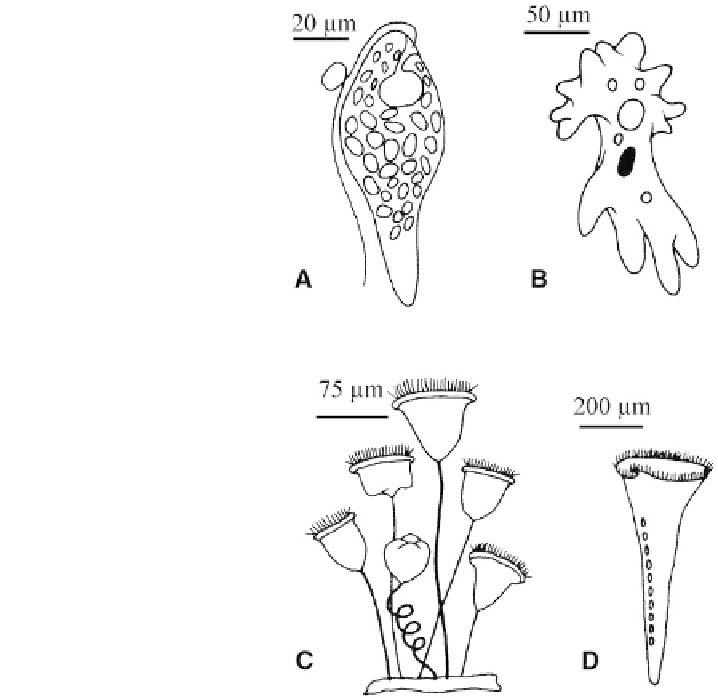Environmental Engineering Reference
In-Depth Information
FIGURE 8.10
Selected protozoa: (A)
Khawkinea,
a zooflagellate; (B)
Amoeba;
(C)
Vorti-
cella,
a colonial ciliate; and (D)
Stentor,
a solitary ciliate (reproduced with permission from
Thorp and Covich, 1991b).
cally abundant where pollution or natural inputs enrich groundwater with
organic compounds, but when the groundwaters are anoxic the fungi are
less abundant than in oxic water.
An interesting mode of nutrition for some aquatic fungi is predation on
rotifers or nematodes. The fungi that prey on rotifers have sticky appendages
that trap the organisms and then rapidly grow into them. The nematode-
trapping fungi inhabit soils and aquatic sediments and can form a net of
loops or snares that trap the nematodes as they crawl through (Fig. 8.11).
Aquatic Lichens
Lichens (a symbiotic partnership between a fungus and an alga) are
never found in groundwaters and only rarely in the benthos of lakes and
rivers. Fairly dense growths of the lichen
Dermatocarpon fluviatile
can be
found on the benthos of streams and some lakes. Lichens can make up a sig-
nificant component of wetlands, particularly those in northern temperate,

Search WWH ::

Custom Search